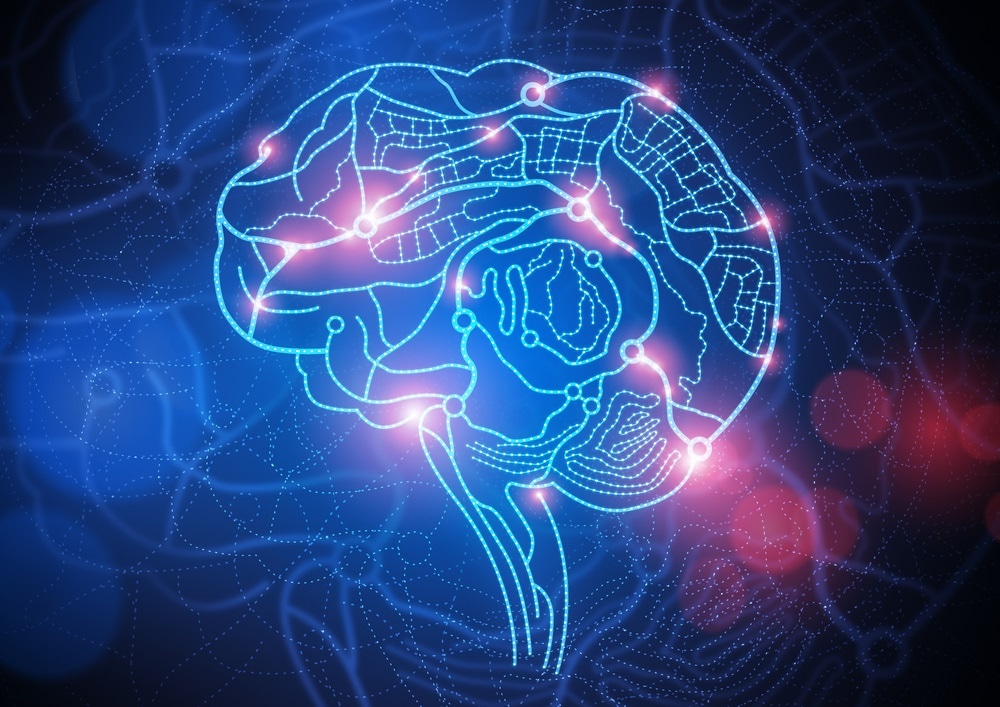For many years it has been believed that the brain’s motor regions dictate movement in specific parts of the body. However, a team of neuroscientists at Stanford and Brown University have recently published findings of their new study in the journal Cell which reveals that the motor region for the hand also connects to the entire body.
 Image Credits: Solarseven / Shutterstock.com
Image Credits: Solarseven / Shutterstock.com
Motor areas not as specific as first thought
Previous research has allowed neuroscientists to understand the neural correlates of human functioning, from thoughts, memory storage, and language processing, to conscious movement control. However, while the brain has been mapped out in fine-grain detail in terms of its functionality, until now, it has been difficult to map activity at the level of the individual neuron.
To overcome this limitation, researchers have innovated a way to record single-neuron activity by implanting microelectrode arrays within the brain. In a study which was a joint effort between scientists at Stanford and Brown University, these arrays were inserted into the brains of two participants, revealing that the brain area previously thought to regulate hand movement is actually involved in a range of motor functions.
For a long time, the human motor cortex has been considered to be functionally segregated, with specific parts relating to specific body parts. For the first time, this theory has been shown not to be the complete story, with regions that control the hand and arm shown to hold information for the entire body.
All four limbs are linked
The study is part of a wider research project known as BrainGate2 which aims to develop and test new devices that revive lost capabilities of those suffering neurological conditions. The development of brain-computer interfaces (BCIs) has been a major focus of this research.
The current study involved two participants with the partial or total loss of use of both arms and legs, known as chronic tetraplegia. One individual who took part had a high-level spinal cord injury, the other individual had amyotrophic lateral sclerosis.
Researchers implanted an electrode array in the brain region known as the hand knob area of the motor cortex in both participants. Previous research has suggested that this brain region is specifically involved in controlling the movement of just the hands and arms.
Measurements of the action potentials generated by individual neurons were taken by the electrode array when participants were asked to make certain movements. Researchers observed that this area not only became activated when tasks required hand and arm movements, but also when the face, leg, and other body parts were required.
The team also found that the patterns of neural activity related to making distinct movements, such as moving a wrist or an ankle, are much more similar than were expected.
The findings show that all of the body’s limbs are unexpectedly linked.
Future brain-computer interfaces
What the team found is significant because it will help scientists develop more intuitive and effective BCIs to enable those with various forms of paralysis to move again. Previously, scientists had thought that to regain movement, it would be required to implant electrodes in different areas across the motor cortex. With these findings, scientists now believe that they could control movements by using an implant in just one area.
This research may lead to applications that help people with locked-in syndrome or paralysis regain communication by allowing them to interact with a computer. Researchers envision a system where different types of body movements can be connected to different kinds of computer clicks, enabling someone who has lost the use of speech to use a computer. However, more research with larger groups of people is needed before scientists can develop such a system.
Source:
Brain mapping study suggests motor regions for the hand also connect to the entire body. Available at: https://www.eurekalert.org/pub_releases/2020-03/cp-bms031920.php
Journal reference:
Willet, F.R. et al. (2020). Hand Knob Area of Premotor Cortex Represents the Whole Body in a Compositional Way. Cell. DOI: https://doi.org/10.1016/j.cell.2020.02.043